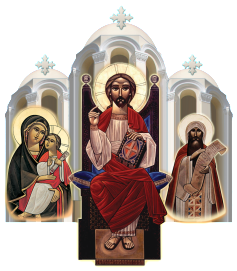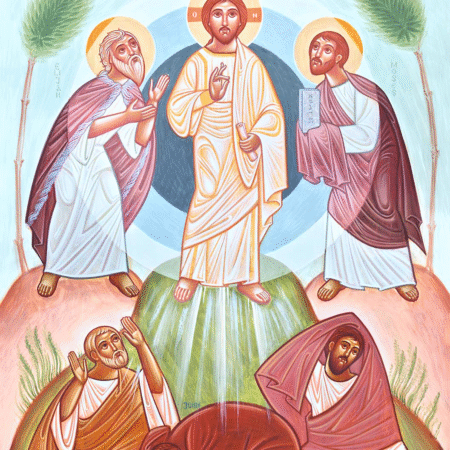The Feast of Transfiguration
Mesore 13, 1741 A.M. (August 19th, 2025)
Today, we celebrate the Feast of the Transfiguration of our Lord Jesus Christ on Mount Tabor.
Christ’s transfiguration on Mount Tabor required a ‘transfiguration’ on the part of the disciples who were with Him. Not a transfiguration of the body, but of the spirit. In the Gospels of Matthew and Mark, we read:
“Now after six days Jesus took Peter, James, and John his brother, led them up on a high mountain by themselves; and He was transfigured before them”
Origen focuses on the significance of the phrase “six days” and points out that the mention of it is deliberate and meaningful. Since the world was created in six days, what Origen calls “the perfect number” and “a perfect work of art,” he suggests that ascending the mountain after six days symbolizes transcending the material world.
Origen writes:
“If therefore any one of us wishes to be taken by Jesus, and led up by Him into the high mountain, and be deemed worthy of beholding His transfiguration, let him pass beyond the six days, because he no longer beholds the things which are seen, nor longer loves the world, nor the things in the world, nor lusts after any worldly lust… and whatever things whose nature it is to distract and drag away the soul from the things which are better and diviner, and bring it down and fix it fast to the deceit of this age… For when he has passed through the six days… he will keep a new Sabbath, rejoicing in the lofty mountain, because he sees Jesus transfigured before him; for the Word has different forms, as He appears to each as is expedient for the beholder, and is manifested to no one beyond the capacity of the beholder.”
In essence, Origen teaches that to be deemed worthy to witness Christ’s transfiguration, we ourselves must be spiritually transfigured, which is to detach our soul from worldly desires and the lusts of the flesh.
St. John Chrysostom builds upon Origen’s teaching, exhorting us to “lay aside our filthy garments” and to “put on the armor of light.” He connects the Transfiguration, where the Gospel writers say, “His face shone like the sun, and His clothes became as white as the light,” with Christ’s own words, “The righteous will shine as the sun” (Matthew 13:43). He explains that “the sun” in both passages is not a limit, but simply the highest comparison human language can offer. The sun is the brightest light we know, yet Christ’s glory and even the glory of the saints will far surpass it. St John Chrysostom says that on that Day (Judgement Day), all earthly illusions and social distinctions will vanish, leaving only the truth of our deeds before the all-knowing Judge. This is why we have to live in holiness now, so that we may be clothed in the radiant light of God.
Beyond the indescribable sight of Christ’s radiance and the appearance of Moses and Elijah, St. Cyril of Alexandria draws our attention to another crucial moment: the voice from the cloud. He writes:
“Something else was done, useful and necessary for the confirmation of their faith in Him, and not for the disciples only, but even for us too. For a voice was given forth from the cloud above, as from God the Father, saying: ‘This is My beloved Son, hear Him.’”
St. Cyril explains that this declaration is significant because the Father publicly affirms His Only-Begotten Son as the fulfillment of the Law and the Prophets. We are no longer bound by the commandments given through Moses, nor are we still waiting for the Messiah foretold by the prophets. What remains to be overcome is not the law or the prophets, but our own flesh and the sinful desires that bind us.
May we put aside our worldly desires and lusts of the flesh, return to God by putting on the armor of light, and be worthy of beholding Christ’s radiance.
Sources
- Bible, NKJV
- Festal Works of the Fathers, Doss Press

